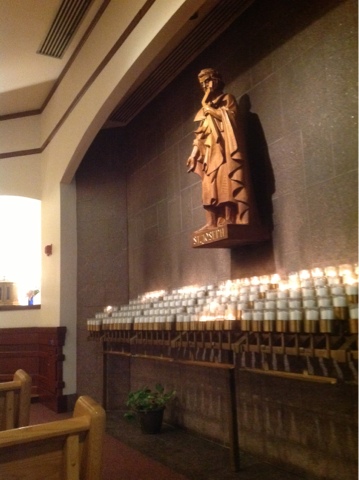Books lead you, one to another. Last month, I read
"Swerve: How the World Became Modern" by Stephen Greenblatt.
Swerve tells the tail of a Florentine named Poggio Braccionlini, who rose from being an ordinary clerk to become a Papal Secretary. Unfortunately the Pope Poggio served was subsequently forced to retire (history lesson for me - learning about the period when there was more than one Pope) and Poggio lost his job. He decided to pursue his passion to locate long-lost classical texts and in 1417, found a copy of the poem
De Rerum Natura, by the Roman poet-philosopher Lucretius, in a German monastery. Lucretius was a disciple of the Greek philosopher Epicurus and as such, the poem expounds on the Epicurean philosophy (pursuit of pleasure as the highest good in life) and lots more besides. The book's title is supposed to denote the point at which the western world moved away from the gloomy Stoicism which characterised the Middle Ages to experience the re-birth of a more liberal, enlightened age - also known as the Renaissance. Many reviewers (see
here, and
here) do not quite agree with the fundamental thesis that the discovery of this poem caused such a fundamental shift in western philosophy. I am not going to attempt my own assessment. But the book goes on to recount how this poem influenced other influential readers and thinkers who have influenced many others in their turn - people like Botticelli (he who painted the
Birth of Venus, La Primavera, etc
), Thomas Jefferson (American President and author of the US Declaration of Independence), and Michel de Montaigne.
Michel de Montaigne? Who is he, you may well ask? I had never heard of him till reading
Swerve (I am no philosophy student). But it so happened that I went to the library soon after finishing
Swerve and was randomly browsing along a particular shelf when I came across a book:
"When I am playing with my cat, how do I know she is not playing with me: Montaigne and being in touch with life" by Saul Frampton. Instantly struck by the profundity (or maybe pro-felinity) of that simple question, I borrowed the book.
 |
| Ariel: I'm afraid she is definitely playing with me |
Thus, serendipitously, surreptitiously, I came across Montaigne. Turns out that Montaigne is a French philosopher, a famed essayist. Montaigne's philosophical approach derived from his experiences (or essais, or "tastes"
of life). He drew from what he experienced through his senses to make observations about life, and living. In this, he differs considerably from Descartes, who some 30 years after Montaigne, would take a far more rationalist approach ("I think, therefore I am").
Frampton's book helps us understand Montaigne and his essays. Born in 1533, to a Gascon nobleman, Montaigne would encounter sorrow and death (of his father, best friend, brother and first daughter) within a short period and in 1570, decided to retire to his estate to think gloomy thoughts. However, his reflections during this period led him to realise that life, at the end, was well worth experiencing and living, with humility and grace. He asks himself, "what do I know?" and comes to realise that there are no absolutes, that life cannot be lived in black and white.
Which brings us to the famous feline quotation. When I am playing with my cat, how do I know she is not playing with me? In this particular essay, Montaigne challenges man's presumption of superiority over the natural world around him. (See further explanation
here.) Perceptive indeed, given that our actions have shown that whilst we can certainly change the climate, we don't know how to change it back.
Frampton's book is reviewed
here and
here and
here. One reviewer feel that he has not captured the richness of Montaigne's work. But others say that it is a good introduction- to give the reader a taste, an "essais" of Michel de Montaigne. Which is what he has done, at least for me. I find I like Montaigne. I like his openess, his humility, his warmth and humanity. I like that he plays with cats. I find I want to read more about him. Books lead you, one to another.
For more on Montaigne, you can try reading his essays. I also came across
this series of posts from the Guardian. Looks like this Renaissance philosopher still has much to teach the modern world.























